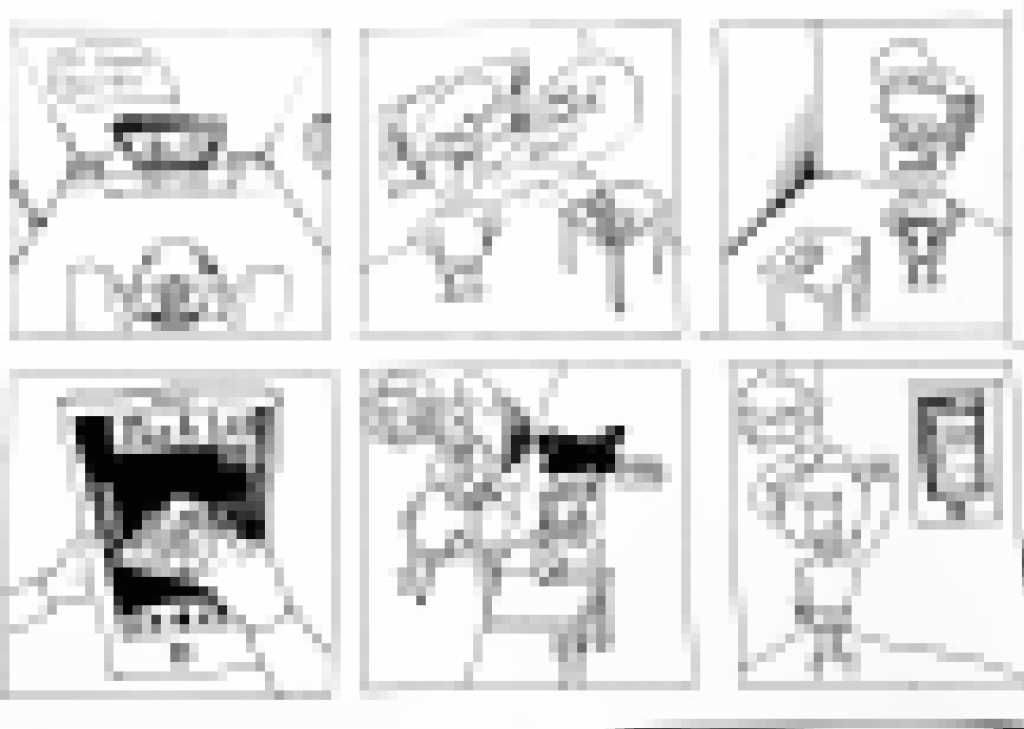Come back soon, we can’t wait to show you what we have on offer.
Category: Project activities
Blog4 Self-built housing
Blog 4
Ⅰ How the goals going
The intimal project goal is ‘To make the co-design self-built homes become more accessible to people. Improving the current weakness of co-design self-built homes, finding a way to promote their ideas (like workshop/website) and then widening public’s community participation.’
Our goals are mainly stay at the same, however, we do some small changes reflected on our interview. As a team our aim is to provide and design a website and an app, through this platform we would help those people who are already involved in self build houses, to become more involve with the design processes.
- Detailed wants and wishes from the client. What are their aims and what they want to achieve?
- Provide some easy soft wears and make it easier to understandable for non-professional self-build through our app and website.
- Make a better link between our non-expert and expert such as (workshop, one to one contact, and online communication.
- Make the design process smoother to understand.
- Provide design concept e.g. 3D.
Ⅱ Search for relevant related project
Example1: Protor Homes
- This establishment takes the idea of self-building to a more self-chosen type of style.
- Proto homes take the self-build ideology to a more prefabricated manor.
- The organisation from the off go incorporates the customer with design. For example the customer chooses a pre-made design, and can edit to their own needs. Useful in thought that people can see the development of their homes designs and other self-build activities.
Example2: Site For Self-Build
- In addition, we thought the gallery would be a great concept when it comes to the sketch up. A gallery / portfolio of houses of which aspiring self-builders can look and choose depending on what they see fit. We thought that an interesting concept would be to have a more interactive design concept, which is where the sketch up idea came. Pre-designing houses over sketch up gives people great access and interaction with the design process as a whole.
- The way in which the company involves the customer is clear from the get go. The Home page of Proto Homes’ website provides a potential and current self-builders a whole catalogue of dated events. This therefore gives both consumer and organiser a whole platform of interaction. We feel that using a similar idea on the home page of the website would be useful.
- This organization is more of a platform to enable people to look at self-build organisations within their area.
- The group describe themselves as self-build creators and offer their professional services to individuals, groups and private enterprises.
- The organisation enables people to start and join self-build locations also, and have a large team enabling high quality of service.Also, the addition of blueprints and maps on their website is very useful. When it comes to the location of any build, it is important and also well worth doing research. We find that providing maps and location diagrams gives people understanding of that given self-build. Using Blueprints of the area, or potential blueprints, the consumers of the self-build project will understand that they can have influence on the project from the foundations.
- (Here is the initial design of the format of website)
- The website of Site For Self-Build had strong social links. Compared to the West End Housing Association, and Proto Homes we felt that Site 4 Self build has much clearer contact methods. The whole point of this project is to get people more involved with the design, and this is obviously done by contacts and connections. A strong and explicit few of methods of contact I feel is essential for this type of project to go ahead. Especially, the phone number. Giving that other self-build projects have out of country numbers such as the Proto homes, a recognisable number I feel would suggest clarity and trust too.
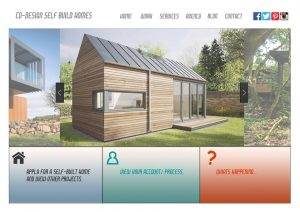
Blog3 for Self-built housing
Blog 3 —Response of Interview
On the 21st of October, our group met with Jerry Drake who is the member of West End Housing CO-OP. We asked a series of questions of her daily life and their organization, and then noted the key responses:
- With her previous experiences she informed us that there is a lot of trouble regarding land and grants and she experienced many barriers during the process of self-built housing. She also struggled with finding available land that the government would provide to build on.
- the West End Housing CO-OP are all equal members within their society and are all involved within their community as they all occupy the houses they own.
- Before the housing co-op began to build, in the areas they were planning on doing so they vigorously asked the local community within that area. Finding out the local opinion and then questioning them how they felt it would affect them.
- When the housing co-op began a regenerative project, Jerry said that the council were very helpful and supportive of projects like there’s. In addition, Newcastle council are interested in this form of project, along with Your Homes Newcastle owning the majority of the land available within the Newcastle.
- Jerry made it clear that throughout the process that the West End Housing CO-OP went through to complete their self-build homes they had many issues along the way such as: time constraints on the planning side, financial issues for housing to rent, acquiring the land, the cost of self-build housing.
- The housing co-op runs off a democratic model with every member as equal as the other. The co-op they run makes for a cheap living as they occupy their own properties they are their own landlords.
After this interview with Jerry, we found that the suitation of self- build housing is not as good as the other housings (like socail housing).Self-built housing is not the mainsteam housing in UK and most of the public are not familiar with this new type of housing. So we thought that engaging more people to have their own self-built housing can improve the current environment. In the next step, we try to create a new website for the West End Housing Co-op, because we found that the current website is not useful for the public to understand the process of self-built housing clearly. Therefore, in the new website we will provide more links for the public to contact with the Co-op. Also, we will try to create a bridge for both the experts and non-experts to join and cooperate in the design process of self-built housing.
Young People Engagement – Week 5
After a successful site visit, we came together as a group and discussed the different possibilities of creating a digital device. We were inspired by a number of non-digital and digital ideas. We came across ideas such as having a VR hologram projecting the user’s propositions of the development. We debated other potential ideas, like the use of chalk to make graffiti visualisations on a surface that could show the user’s proposals but chose to keep a more digital approach to our final project because we considered the non-digital ideas to be less suitable for our users.
At first, we thought of making a QR code. The idea was that the code would be scanned by the users which would lead them to a government related website with information about the current development site. We knew this idea would appear quite late during the planning process and thought it might have an affect on the user’s propositions. We were also worried that the website would provide too much information at once for the users which would not be easy to understand nor enjoyable to read.
The second concept we were trying to develop was an app. We thought the proposition of an app would allow the users to take part in the planning process at an earlier stage, therefore giving time to the Council and developers to consider the user’s propositions. The app would work like a visual interface. The app will allow for new topics and activities to be created. How does it work? Well, once the app is opened, a plot of land would show up on the screen. Through its tools, the app would support a large variety of subjects, like inserting different types of infrastructures or ponds onto the plot of land. A dragging feature would allow the plot of land to be filled with houses, schools, parks, roads, shops. These would be designed through Sketch Up (One of our design software’s) and then integrated into our app with the help of our technician. We want these animated features to reflect what the users want to see in the new development like leisure centres, open spaces and well linked roads. We also suggested that the app would have a share button indicating that the user designs can be commented on by other users, or shared with developers and the community and downloaded for future use. This is where we have got to so far, next week we’ll be looking into more detail about our concept while discussing it with our project mentor.
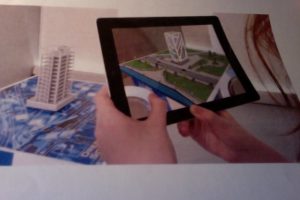
air quality group Week 5
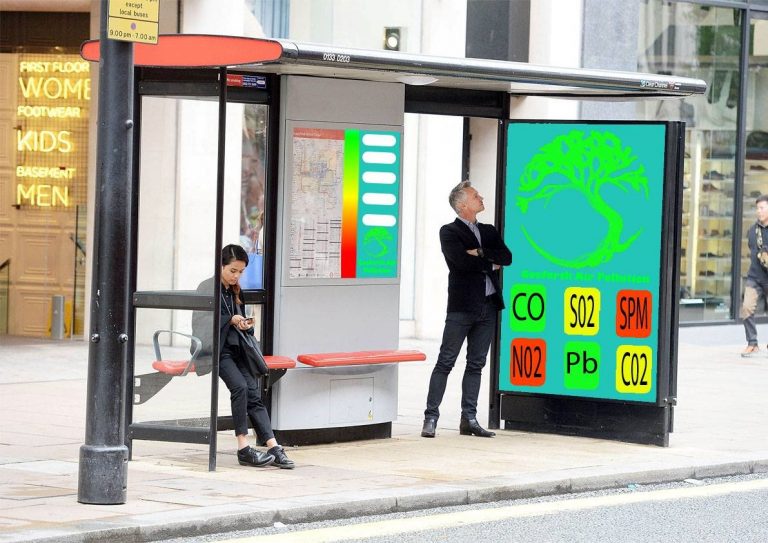
Why:
- Bus congestion a major concern towards air pollution levels
- Targets pedestrians along the street, public transport users at the stop, users already on the buses when they stop, cyclists and general Traffic
- Maximise user’s interaction with older less tech savvy still experience this on the street, simple and bite-size to engage the younger generations ACCESSIBLE FOR ALL
- Limited space for installations along the street use existing structures (bus stops), more installations on street level can be a hazard to navigation of the street for the disabled community
Interactive Display:
- Has options for display and information via pages as well as displaying scale of pollution and connects to the main screen
Logo:
- Changes colour (traffic light system) depending on levels of air pollution or the trees health changes size (leaves lost)
AR Feature:
- Large display double sided with camera fitted to allow AR view of the street (viewing portal) displaying live data along the street, controlled by the interactive display
Air Pollutants display:
- Shows the main 6, displayed in a traffic light colour as indication of the levels (e.g. red being bad) display targets pedestrians (simple navigation for young and old) , public transport and general traffic with bite size information
Accessibility:
- Braille like
- QR codes positioned on side of the display for audio assistance for the blind
- Hearing Aid Channel
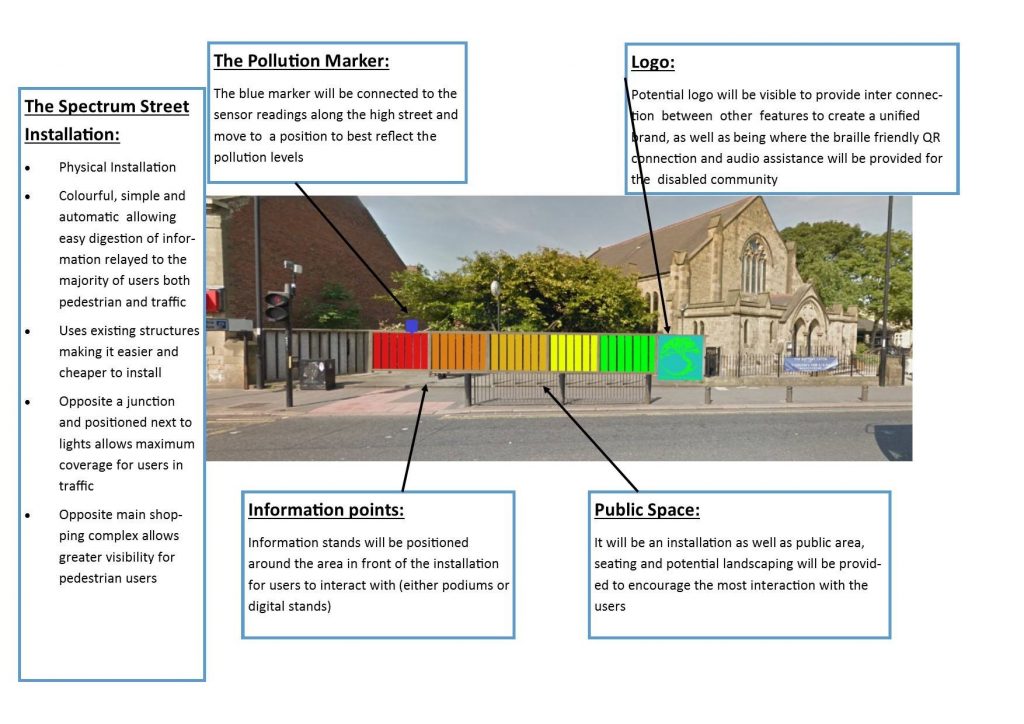
Concept ideas:

In the first place, the app for phone or computer needs to be simple to use for everyone. For example, in our presentation pages, we can find only four possibilities. Those possibilities are reduced by type of users, and they can recognise themselves by logos or simple draw.
For the first possibility (1), for drivers, there is a map with traffic congestion, like that they can reflect on fact of traffic congestion. In this part, we can ask for what they need to use this road (for businesses, school, go to the city centre). We can put other solution like buses to go there.
The second logo concerned bicycles (2); they can see a map of areas of air pollution and see a map of bicycling lanes and ask for what they need to go through.
The third (3) it for people by foot, they can have a map for safe areas in term of air pollution, ask them for what they need to be there and have like a game with air pollution in reality augmented.
Finally, the part (4) concerning the associations, in this part we can have links of all association concerned by that and involve more people to be connected with society.
In each page, people can go back and like that a people who planned to go in his job by car and finally decided to go by bicycle, so find alternatives.
Weaknesses:
The most weakness of the app it’s it need to have people who use it to have the real statistics on the new data (for what they through this street). But the combination of the app and boards on street can allow us to reach everybody. Only blind persons cannot have a visual of the air quality.
What we learned about other presentations:
There is a group who considered the QR code on streets to have a direct access to information. For our project, we can consider putting QR codes on boards to have a direct link to download the app or view a web page.
air quality group Week 4
Project Goals:
The initial project goals where;
‘A Newcastle university urban planning focused bottom up campaign initiative to increase user and community awareness of air quality control cantered on Gosforth high street. Working with the users on easy and effective forms of interpreting the data supplied by the air quality monitors situated along the high street, making the data accessible to everybody with the goal of increasing community awareness and support for self-managed air quality control through community projects.’
The Goals have mainly stayed the same as initially outlined, however, we have also reflected on our interviews and the progression in our designs in which have both led to the incorporation of further goals. These include a focus on smart technologies to present data interactively as well as improving the air pollution levels through new material innovations. Another goal we have added is the need for a community behavioural change from the current passive users to a more active user base improving interaction in air quality activism this was formed reflecting on Peter McDonalds interview. Reflecting on our interview with Duncan we decided to add to our project goals in relation to local business interaction and inclusion within our plans.
Examples
- Augmented Reality
– Using AR to visualise something, in our case it would be air pollution. We selected this as it could help us engage with younger audiences.
- Air Quality App – Breezometer
– This app gives the user real-time information about air pollution across 27 countries. Furthermore, the app gives location-specific notification at times of bad air quality. We selected
- Pollution Control Board – Eloor, India
– Large public display that shows real-time air pollution levels. We selected this as it can be shown to everyone on the high street.
- Air Pollution Cladding
– Two types, one that cleans the air around it and another that changes colour depending on the current level of air pollution
- Clever bus shelter advertising
– A bus shelter that has an interactive display using smart technologies.
Peter McDonald and Duncan Young Interview Reflection week 3
We had an interview with Peter McDonald and got a lot of background information about Gosforth high street and the air quality concerns. The main thing Peter wanted to change is increasing the public awareness of air quality and community activity. The council and people who live there have already taken some actions to improve the air quality, a local council plan was implemented called The Air Quality Action Plan carried out in 2011, However, Peter believes it is not effective as nothing has really changed in the area. There are still 96 bus routes on the high street which is one of the main causes of air pollution and are still not controlled. Ten air quality monitors are situated along the high street and they gather useful data but the data is not easy to access and understand and is therefore largely ignored by the local community. Peter hopes that less people will drive their cars everywhere and walk their children to school if the data is made easily interruptible for the users. They have a Facebook account and people can leave their comments. It is good for them to know what the residents think about but there are not enough people passionate about their community air pollution levels, therefore peter believes a behavioral change needs to be implemented with the local community to increase user activity. Display boards are the best idea for them because it is easily accessible for everyone who passes along the street and easy to understand for children, adults and the old. To some degree, the goal is to make more people realize the importance of air quality activism.
Duncan Young Interview Reflection
1. What is your Role within Gosforth high street?
Duncan stated that as well as being a business owner he was also a resident on the high street and a member of the trader’s association
He also discussed the existence of the trader’s association but said it was limited by the fact that only the independent business got involved.
2. What challenges do you feel Gosforth high street faces?
He said congestion was a huge problem on the high street especially at peak times. He wasn’t really sure on how to solve this personally but one idea he thought of was to divert the limited stop X bus routes via Cowgate instead of the high street. I personally felt this was a bit of nimbyism as the bus would just be blighting the residents of Cowgate instead. He also showed us the local council’s red route plan that local shops fought off despite it potentially reducing congestion on the high street as it would have stopped customers/delivery’s stopping on the high street.
3. Do you know how most of customers currently travel to the Gosforth high st?
He stated that most of his own customers drove to Gosforth High St, he then showed us a survey from 2011 of high street users.
The majority of respondents arrived by car:
66% car
16% bus
6% cycle
29% foot
This was particularly useful as really demonstrated how local shops are dependent on the traffic.
4. How do local shops on the high street feel about the Air pollution?
He said that local shops are concerned but are stuck with the problem that they need the traffic as well. He also said the larger chain shops were not allowed to get involved due to head office therefore their feeling is not known.
5. Do the businesses have an existing plan concerning the high street in general?
They did not have a plan.
6. Are you aware of the Urban observatory data available online at http://uoweb1.ncl.ac.uk/ that shows real time data from the 10 air pollution sensors on Gosforth high street?
He said he was aware there was some pollution sensors but was not aware there was 10 of them and that the data was available online. I found this interesting as you’d of thought somebody based on the high street would be aware of theses sensors.
7. Given the choice of a Smartphone App, Interactive Display on the high street, Emails, Website, Newspaper or any ideas of your own. Which would most likely engage you with air pollution is Gosforth High St.
He said something as simple a leaflet to inform his would work. He then said big token acts are very good but if the resident’s/shop owners don’t know what there about then there pointless. I took away from this statement that whatever we propose must be simple to engage people and be well-advertised so people know what it actually is.
He then ended the interview by saying the problem for business is they need to save the high street without killing it.
interview schedule for air quality 2
Week 2
Interview Questions – Duncan
Introduction
Thank you for your time Duncan, we are second-year students at Newcastle University who are currently looking at air pollution on Gosforth high street. We understand you are the managing director of Sanderson young estate agents which has a branch on Gosforth High St.
1. What is your Role within Gosforth high street?
-How do businesses and shops currently talk to each other? (Is there a traders association?)
– Do businesses and shops (or trader’s association) currently talk to any other groups in Gosforth e.g. Space ?
2. What challenges do you feel Gosforth high street faces?
-How do you personally think these issues should be solved?
3. Do you know how most of customers currently travel to the Gosforth high st?
-Do you feel that is reprehensive for most businesses on the high street?
4. How do local shops on the high street feel about the Air pollution?
-How would local shops feel about a reduction the car traffic to achieve lower air pollution?
5. Do the businesses have an existing plan concerning the high street in general?
– If yes, does this plan mention air pollution?
6. Are you aware of the Urban observatory data available online at http://uoweb1.ncl.ac.uk/ that shows real-time data from the 10 air pollution sensors on Gosforth high street?
– If yes, do you ever look at these sensors ?
7. Given the choice of a Smartphone App, Interactive Display on the high street, Emails, Website, Newspaper or any ideas of your own. Which would most likely engage you with air pollution is Gosforth High St ?
Young Planners Engagement – Week 3
After the first two weeks of setting our goals, meeting our client for the first time, working out the links between stakeholders and getting prepared for an interview, it was time to get the project really moving in a direction which we were all happy and comfortable with.
On the 19th October, the group went to meet 3 members of the Youth Council alongside their mentor. We had taken aboard comments and advice about the questions we were going to ask so we were confident with what we had prepared. We opened the meeting by asking if it was ok to audio record to make sure we had all the information we needed and didn’t miss anything if we wanted to go back and check details. Each member of the group introduced ourselves and we started off by talking to the members of the Youth Council about the plot of land in Murton and what they felt was needed in the future for the area to strive, looking at a map showing North Tyneside and the existing services. The user representatives were very aware on the matter of green space and keeping it protected as much as possible. They also commented on the existing road systems and how they thought some new roads connecting Murton to Monkseaton would be beneficial as the new houses that the developers are planning to build will need road links to help tie together the new built homes and services. Leisure centres and swimming pools were talked about briefly to give the community some recreational use as there are no existing establishments in close proximity. The other topic mentioned was ‘allotments’ and the high demand in North Tyneside for the spaces. As it was commented that the community members wanting an allotment would have to wait several years on the waiting list, so looking to include these would be a massive positive for the community.
The meeting progressed really well and it flowed naturally, we tried to work from our question structure and linked it making it more personal to the clients. The user representatives started telling us about their roles and how they got into it. It was really beneficial as we learnt how it was all voluntary and due to an interest in helping their community and the rewarding feeling they all got. Something we felt was an important issue, was that the Youth Council felt unheard and didn’t have a voice when involved with the developers. We asked about their communication and were informed about the lack of it and how they never engaged with the youth council. The interview then naturally developed through talking about communication to how the use of modern technology affects our lives and how they used it and what did they use it for. It was the turning point in the interview as we started talking about how reliant on phones and technology people are nowadays. It was a key comment about how each of the user representatives all agreed that young people would be more involved in planning and the process it goes through if it was communicated easily through technology and smartphones. It was the confirmation we needed to know that the clients were on the same page as us.
After discussing various ways to get young people more involved with the use of technology, a couple of ideas arose. For example, it was mentioned about QR codes and how it would be easier for someone to just scan in the code to read the information later in their own time rather than stand on a street in the cold trying to read a piece of paper, in which we all agreed it was a much more efficient way to deliver information. This followed on with discussions about the engagement levels and making a product that was quick and easy to use, that could be visually pleasing and straightforward to make choices and voice your opinions.
We were really happy with what we had learnt in the interview and just how aware these young planners were. It was very beneficial and each of us took a lot away from the meeting with multiple ideas about how we are going to move forward and start to think about possibilities of technological products to make the young people of North Tyneside more involved in the planning process.
Second log entry: User interview schedule – Cycling Group
To improve our understanding of what users of our product will want, we have arranged an interview on Wednesday 26th with Tim Parsons. We know little information about Tim apart from that he is a cyclist in the Newcastle area. Interviewing him will provide us with first hand data about cycling habits around Newcastle and what tools and devices will appeal to that community.
Please find below a brief interview schedule:
Introducing ourselves:
Thank you for arranging to meet up with us. We are second year students at Newcastle University and we are currently collaborating with Robert Snowball who is a senior transport planner at Newcastle City Council. Our aim is to make cycle routes around the city more accessible and well known, as well as attempting to increase the popularity of cycling with help from the council.
- What is your preferred method of travelling around the city on a day by day basis?
– Why is this your preferred method?
– Why do you not choose to travel by other means (e.g. car, walk, bus, cycle)
- Is the transport infrastructure in the city adequate for this method of travel?
– Do you think that other methods of travel are better provided for within the city?
– How do you think the council could improve existing travel infrastructure?
- How would you describe your position as a cyclist in Newcastle?
– Do you feel like your needs (either as a single cyclist or as part of a community) are met by the council?
- Can you describe the ways in which technology helps your everyday life?
– Is technology involved in your commute or travel?
– Do you use mobile technology to aid you this way?
- Do you frequently use any mobile apps? If so, why those specifically?
– Would you/have you used apps to improve your cycling mobility in particular?
- There are already apps that cyclists can use, could you detail any that you use, if at all?
– Why do you prefer these apps to other apps that you have mentioned? (e.g. are they simpler to understand? More accessible?)
- When looking at the design and functionality of a map, what would you say is most important to focus on?
– How do you use maps when cycling? (e.g. Planning ahead? Whilst on route?)
– What would you suggest to simplify reading maps and using apps for cyclists?
- In your opinion, what would encourage more engagement with cycling?
– Should there be more incentives for the cycling demographic?
– How about incentives from apps, the council and community groups?
- Should there be more improvements to current apps offered to cyclists? If so, could you suggest any?
– What stops people from using apps? Why is this?
- From the cyclists you know, would apps be their preferred choice of route planning and engagement?
– Why is this the case? Is this because the app itself is difficult to use? Are there issues with the way a cyclist can use a phone whilst out?
